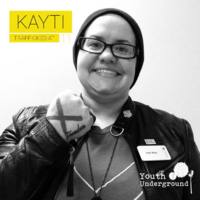
Kayti
There are an estimated 403,000 people living in modern slavery in the United States (GSI 2018). Sex trafficking exists throughout the country. Traffickers use violence, threats, lies, debt bondage and other forms of coercion to compel adults and children to engage in commercial sex acts against their will. The situations that sex trafficking victims face vary, many victims become romantically involved with someone who then forces them into prostitution. Others are lured with false promises of a job, and some are forced to sell sex by members of their own families. Victims of sex trafficking include both foreign nationals and US citizens, with women making up the majority of those trafficked for the purposes of commercial sexual exploitation. In 2015, the most reported venues/industries for sex trafficking included commercial-front brothels, hotel/motel-based trafficking, online advertisements with unknown locations, residential brothels, and street-based sex trafficking. Kayti was trafficked at 11 in the United States. She had experienced sexual abuse at home since the age of two and later, her father took her to a house where she was subjected to child commercial sexual exploitation. Kayti’s exploitation continued until she was twenty-eight years old at which point, she reached out for help.
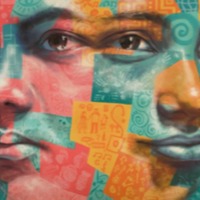
Crystal B
The UK National Crime Agency estimates 3,309 potential victims of human trafficking came into contact with the State or an NGO in 2014. The latest government statistics derived from the UK National Referral Mechanism in 2014 reveal 2,340 potential victims of trafficking from 96 countries of origin, of whom 61 percent were female and 29 percent were children. Of those identified through the NRM, the majority were adults classified as victims of sexual exploitation followed by adults exploited in the domestic service sector and other types of labour exploitation. The largest proportion of victims was from Albania, followed by Nigeria, Vietnam, Romania and Slovakia. Crystal was trafficked to the UK from Trinidad into a situation of domestic servitude leaving four children in the West Indies. She endured an abusive marriage and was vulnerable to coercion and grooming. Crystal was trafficked for four years, sold to three families and worked at least 18 hours-a-day.
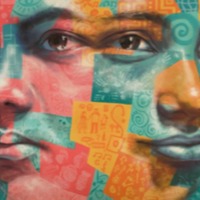
Minjiza
In Tanzania, internal trafficking is more prevalent than transnational trafficking and characteristically facilitated by victims’ family members, friends, or intermediaries offering assistance with education or securing employment in urban areas. Impoverished children from the rural interior remain most vulnerable to trafficking. Girls are exploited in domestic servitude throughout the country and in sex trafficking particularly in tourist hubs and along the border with Kenya. Minjiza’s account makes clear the supportive role NGOs like Agape can play in helping survivors of slavery to build a life for themselves.Minjiza ran away from home after her parents began making plans for her to be married. She went to work as a domestic worker after going to a church for help. She was forced to work long hours with no time off and often had pay deducted.
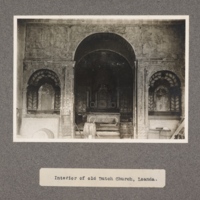
Interior of old Dutch church, Loanda
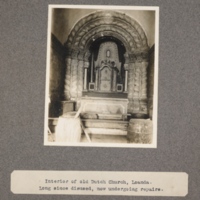
Interior of old Dutch church, Loanda. Long since disused, now undergoing repairs
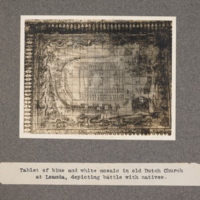
Tablet of blue and white mosaic in old Dutch church at Loanda, depicting battle with natives
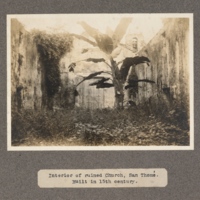
Interior of ruined church, San Thomé. Built in 15th century
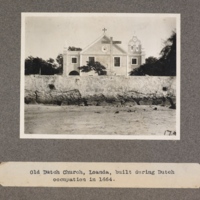
Old Dutch church, Loanda, built during Dutch occupation in 1664
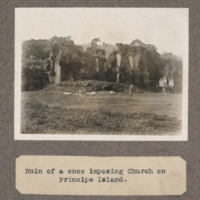
Ruin of a once imposing church on Principe Island
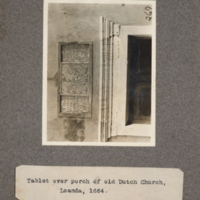
Tablet over porch of old Dutch church, Loanda, 1664
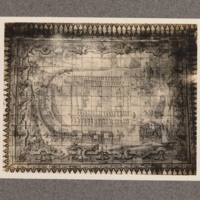
No caption [tablet of blue and white mosaic in old Dutch church at Loanda, depicting battle with natives [same image as B17, image 40]
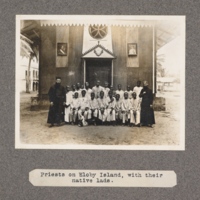
Priests on Eloby Island, with their native lads
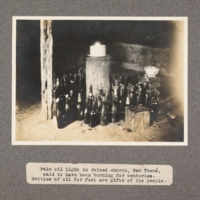
Palm oil light in ruined church, San Thomé, said to have been burning for centuries. Bottles of oil for fuel are gifts of the people
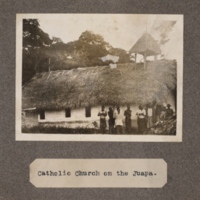
Catholic church on the Juapa
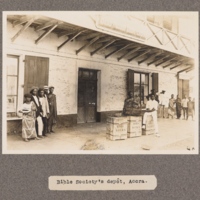
Bible Society's depot, Accra
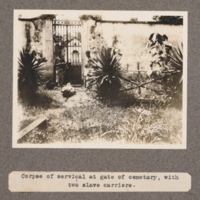
Corpse of servical at the gate of cemetery, with two slave carriers
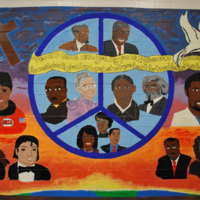
Saint Sabina Mural
In 2011, Chicago-based muralist Lavernon Spivey painted a mural with Howard University students at the Saint Sabina Catholic Church in Chicago’s southside. The mural depicts African American heroes both local and national, past and present, including the antislavery figures Frederick Douglass Harriet Tubman, and also Mae C. Jemison, Barack Obama, Harold Washington, Martin Luther King Jr., Michael Jackson, Michelle Obama, Rosa Parks and Shirley Chisholm. The mural also includes a passage form John 14:27 that reads, “Peace I leave with you, my peace I give unto you not as the world giveth, give I unto you, let not your heart be troubled, neither let it be afraid.”
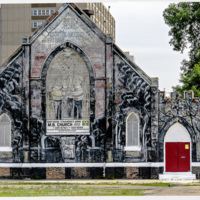
All of Mankind (Why Were They Martyred?)
In 1972, a pioneer of the Chicago mural movement, William Walker, painted a mural on Strangers Home Missionary Baptist Church that was both a rallying call for social justice and a symbol of love and unity. Painted in an era of social revolution, and radical in its day, the inclusionary mural incorporated the names of individuals such as Jesus, Gandhi, Malcolm X, Martin Luther King Jr., and Anne Frank. Further down the murals are the martyrs of the Civil Rights and Black Power movements – names such as Medgar Evers, Mrs. Liuzzo, Fred Hampton, Mark Clark and Emmett Till. In December 2015, All of Mankind was suddenly destroyed. Jon Pounds, executive director of the Chicago Public Art Group (formerly known as the Chicago Mural Group), commented that the mural was a rare remnant of the civil rights era. He knew it was under threat when the church went up for sale in 2011, but preservationists had tried to protect the mural.
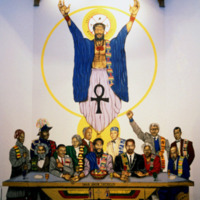
Last Supper
In 1990, muralist Maurice Myron Jenkins created an alternative version of Leonardo da Vinci’s 1494 fresco The Last Supper. The 30 by 19 foot mural depicts the last supper with a black Christ and 12 historical black figures as the prophets. Jenkins chose the Union Temple Baptist Church in Anacostia, Washington D.C. as his canvas because of its role in black history all the way back to its affiliation with Anacostia-resident Frederick Douglass in the 19th century.The mural includes the antislavery figures of Sojourner Truth and Frederick Douglass, as well as Marcus Garvey, Martin Luther King Jr., Rosa Parks, Elijah Muhammad, Malcolm X, Mary McLeod Bethune, Nelson Mandela, Booker T. Washington and W.E.B. Du Bois.
![K. Fitch, Frederick Douglass Mural, Main, West and Chili Avenues, Rochester, New York, 2008 [destroyed].jpg K. Fitch, Frederick Douglass Mural, Main, West and Chili Avenues, Rochester, New York, 2008 [destroyed].jpg](https://486312.frmmmguz.asia/files/square_thumbnails/77bb817c2a6e0bd9f38a07546c281959.jpg)
Frederick Douglass
In 2008, muralist K. Fitch painted a mural of Frederick Douglass in the abolitionist's former home town of Rochester, New York. The mural depicts Douglass in the later years of his life. It had been destoyed by 2014.